Imagine our oceans as a highway — a deep, long highway that wraps all the way around the world.
Seventeenth and eighteenth century mariners’ logs recorded traffic jams on that undersea highway. Traffic jams of sea turtles, not sailing ships. Gatherings of sea turtles so dense that ships could barely pass through them. As Christopher Columbus sailed through Caribbean waters, he described turtles “in such vast numbers that they covered the sea.” That’s a lot of sea turtles.
Today, those traffic jams are gone. Populations of all seven species of sea turtle are a fraction of what they once were, and four of seven are endangered. Human activities have tipped the scales against turtles, threatening their survival.
When we humans think about sea turtles, if we think of them at all, we think about them on land, where we live. It’s only when the females labour ashore to lay their eggs, or when baby turtles emerge from nests on sandy beaches, that the rare few of us are fortunate enough to catch a glimpse of them.
But it’s out in the open ocean where turtles are most at risk.
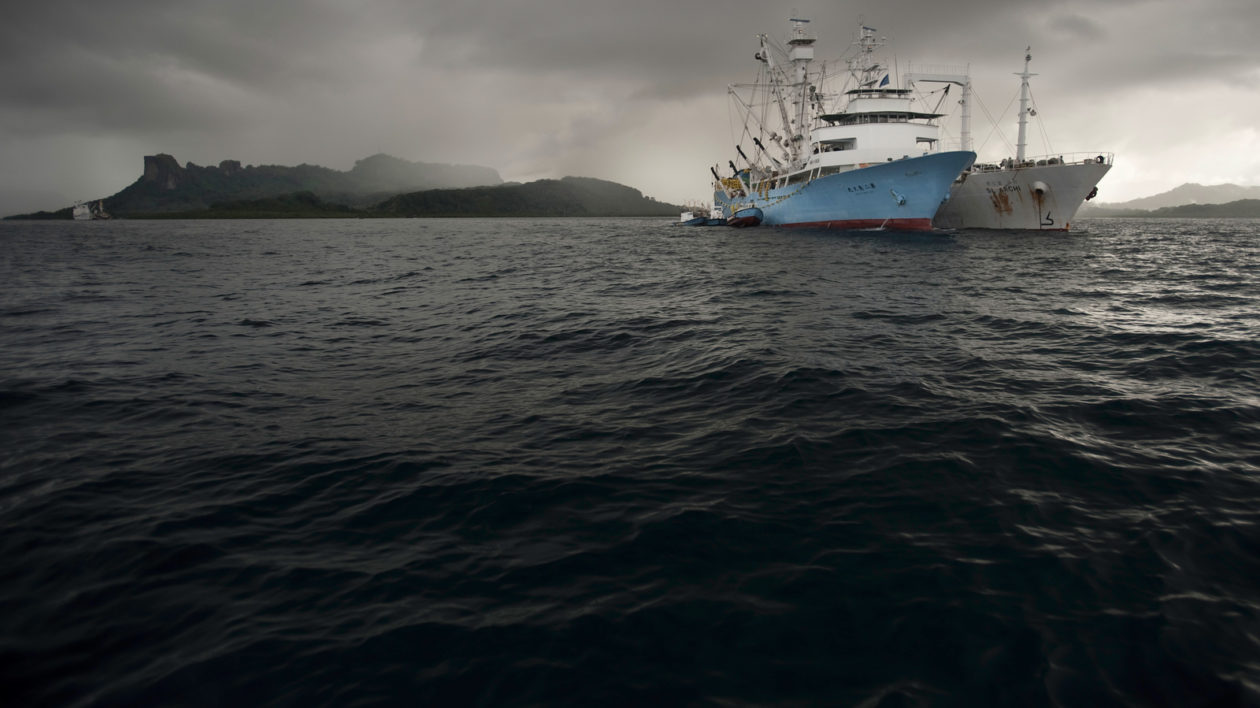
Bycatch in a Baited Ocean
You’re probably familiar with the primary land-based factors leading to sea turtles’ decline: Overharvesting of nesting females and their eggs and loss of suitable nesting beaches due to coastal development. We’ve heard a lot about these problems because they’re easier to see. But focusing only on that brief time when turtles are on land is like focusing only on the highway’s rest areas, rather than the main traffic lanes.
Many years ago, one of my graduate professors lectured us on the longer-term threats posed by longline and gillnet fishing, like tuna, shrimp and other deep sea fisheries, through the incidental capture of sea turtles in fishing gear. At a time when most people were focusing on protecting nesting beaches, he forewarned that these fisheries could greatly accelerate sea turtle decline if not properly addressed — and he was right.
The deep-sea longline fishery is the world’s most widespread fishery. Approximately 5 million baited hooks are set each day on 100,000 miles of line throughout the world’s oceans, targeting tuna, swordfish and halibut. That’s enough line to wrap around the entire globe four times every single day.
And those long fishing lines aren’t just catching fish — they’re catching staggering numbers of sea turtles, whales, dolphins, sharks, rays, seabirds, and non-targeted fish catch.
Known as bycatch, this unintended catch amounts to millions of tons of incidentally captured marine life in fishing operations around the world each year. Scientists estimate that 63 billion pounds of marine life is caught as bycatch across all fisheries — roughly 40 percent of all catch — and more than 40,000 sea turtles are hooked annually on longlines.
On the highway of the seas, commercial fishing boats are the cars and sea turtles are the roadkill.
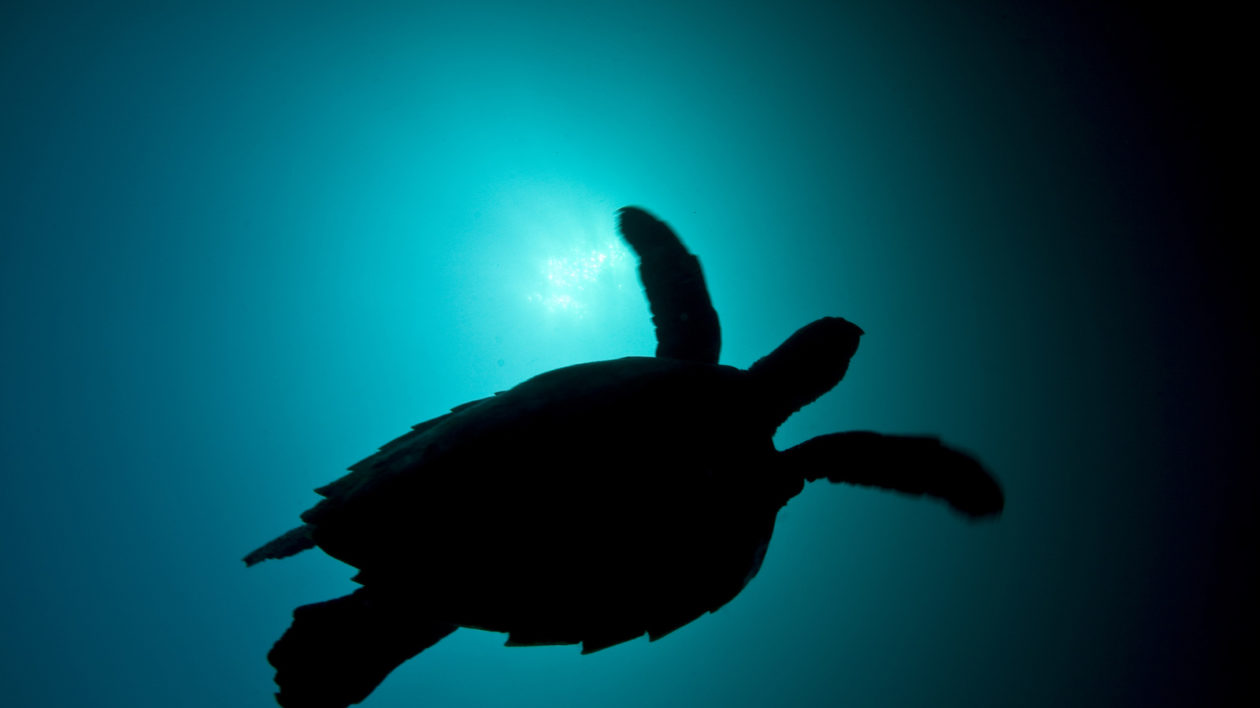
What first got me hooked on working on fisheries problems with The Nature Conservancy was the opportunity to explore innovative ways to change fishing practices — to be a driver, not a passenger, and actually do something to help reduce the loss of turtles at sea, especially in longline fisheries.
The Conservancy is working on tuna fisheries reform in the Western and Central Pacific, home to 60 percent of the world’s tuna. It’s a valuable catch worth an estimated $7 billion — the equivalent net worth of Porsche luxury vehicles.
Roughly one-third of the world’s deep-sea longline fishing efforts occurs in this region, and it’s the last real stronghold of global tuna stocks in an industry that is heavily overfished. But these tuna fisheries also generate a lot of roadkill and provide little revenue to the local countries where fish are caught, including the Solomon Islands, the Federated States of Micronesia and Palau.
Starting with the postage-stamp sized nation of Palau — barely visible on most world maps — we are working with the local government to test new longline tuna fisheries practices, including using different fishing gear, fish bait and fishing methods. All of these modifications are aimed at reducing the unintentional catch of sea turtles and other at-risk marine creatures. Not unlike our highways on land, we’re trying to set the rules of the road to protect marine life.
These new fisheries practices will save sea turtles, and maybe reverse the downward spiral towards extinction that we are witnessing with leatherback turtle populations. Fishing more efficiently with better gear will also help to reduce the mortality and protect other threatened marine life, such as sharks, rays, whales, dolphins and seabirds.
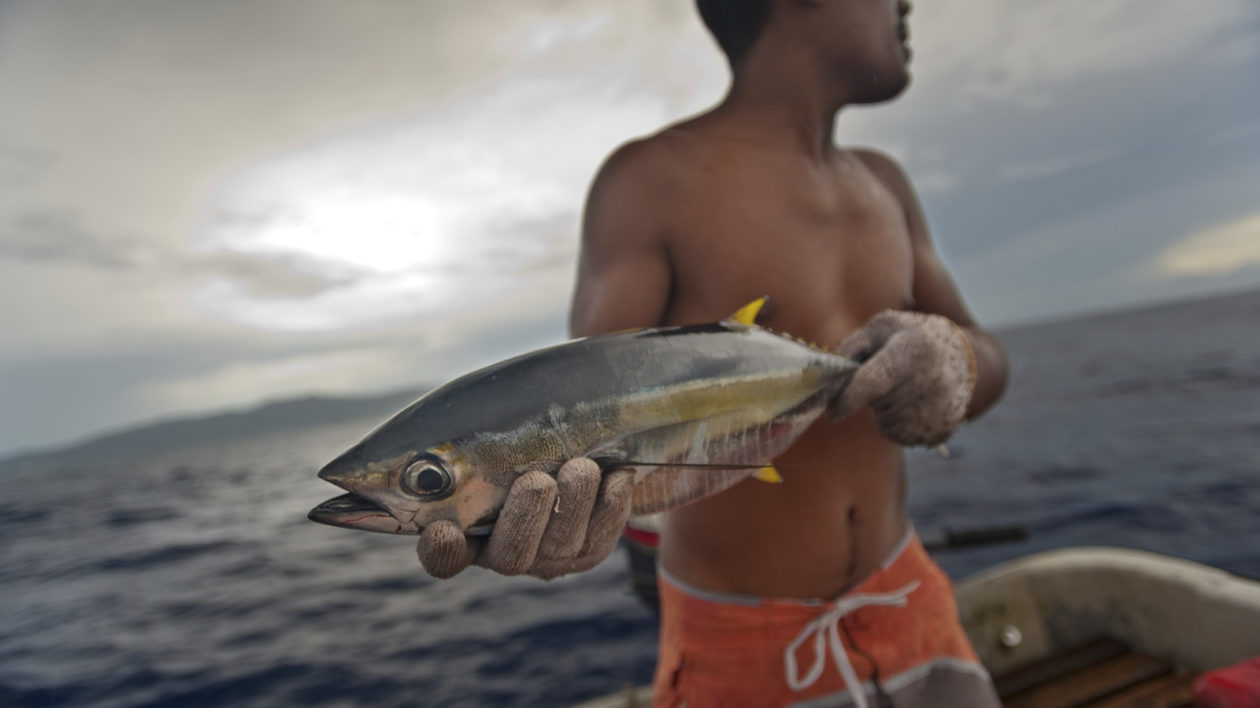
Shifting the Risk for Fisheries Reform
These new ways of fishing will also have financial benefits for Pacific countries, whose primary source of income, for many, comes from the sale of fishing rights. For example, the Solomon Islands’ per-capita GDP of $600 USD ranks it as a lesser developed nation, and more than 75 percent of its labor force is engaged in subsistence and fishing.
Palau does not have its own tuna fishery, but instead leases all of its harvest rights to foreign fleets like Japan and Taiwan. In early 2016, the Conservancy will purchase a number of Palau’s tuna harvest rights and use them to trial these new fishing practices and redeploy them back to foreign fleets, but with conservation restrictions attached. These restrictions will focus on reducing bycatch by modifying fishing gear and techniques and ensuring compliance with human observer and electronic monitoring programs on-board fishing vessels.
In the Western and Central Pacific, the rules of the road are limited and poorly enforced. Political will is lacking to align tuna fishing effort with sustainable harvest. Large foreign fishing nations and Pacific Island states are reluctant to make the short-term sacrifices that we need to secure long-term ecological and socioeconomic sustainability.
The Conservancy will work with fishermen and the fishing industry on market-based solutions, like seafood certification, to develop higher market prices for more sustainably caught tuna products. This will ensure that countries like Palau receive more money for their tuna catch, and that more of this revenue stays with the local countries where the fish are caught.
With the Conservancy’s upfront purchase of harvest rights, we are incentivizing tuna fisheries reform and sustainable harvest by reducing the financial risk to the parties involved. Our work in Palau will serve as a road map for replicating these crucial fishery reforms throughout the region.
Ultimately, it is our hope that these innovative approaches to fisheries management will enable island nations across the Pacific to exercise more control over their fishery resources, improving financial and environmental outcomes for people and nature across the Pacific.
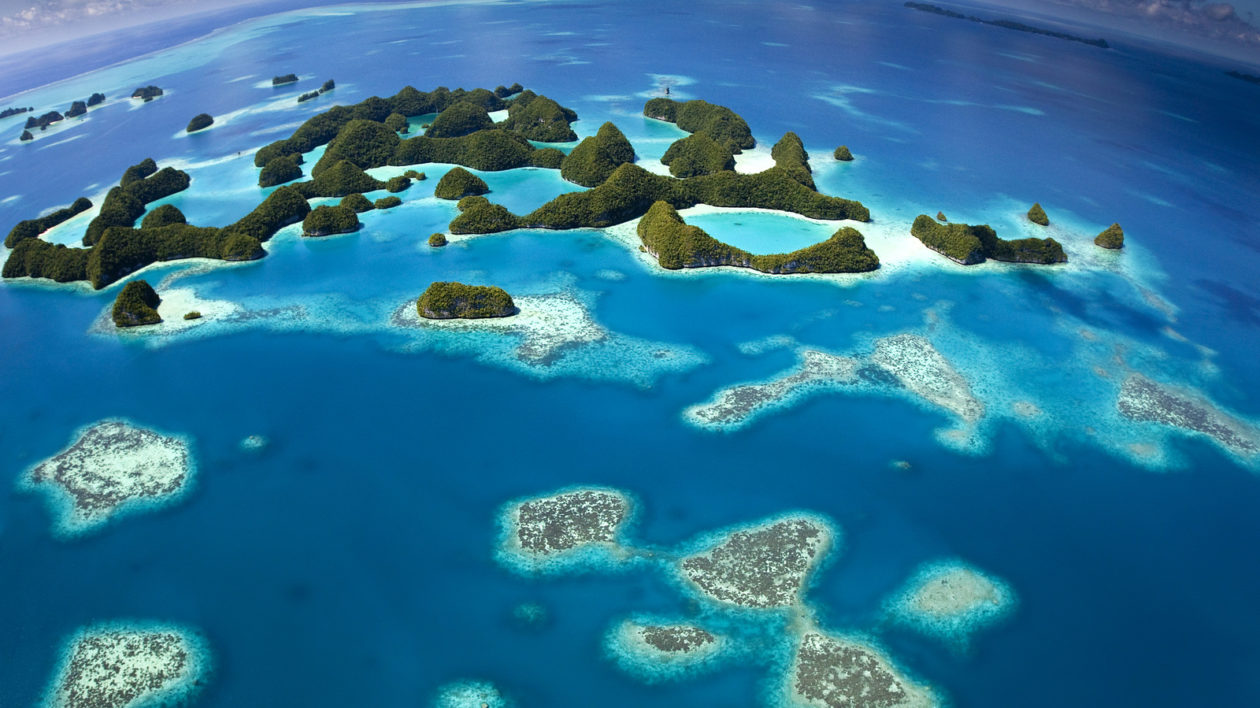
Keeping Turtles On Our Road Map
Many years ago, I ran a sea turtle program in the eastern Caribbean and I engineered my own sea turtle traffic jam. We routinely rescued newly emerged hatchlings that were disoriented by beachfront lighting, so I rounded up all the kids and families that I knew and had a baby turtle races on the beach at sunset. Watching these baby turtles race to the ocean and embark on their lifelong journey on that undersea highway was magical for many of these kids — young and old alike.
The beach is the first stop on land for sea turtles, and the male turtles will never return to land again. Once these hatchlings disappear into the sea they are out of sight, but hopefully not out of mind.
While these turtle races were fun, they were also an important way of reminding us to keep turtles on our road map, even once they disappear into the sea, as we navigate the complex challenge of protecting our oceans.
While we may never see the traffic jams of sea turtles that historic mariners witnessed many years ago, I am hopeful that changing fishing practices and reducing bycatch will put the brakes on the rapid loss of sea turtles and other marine life.
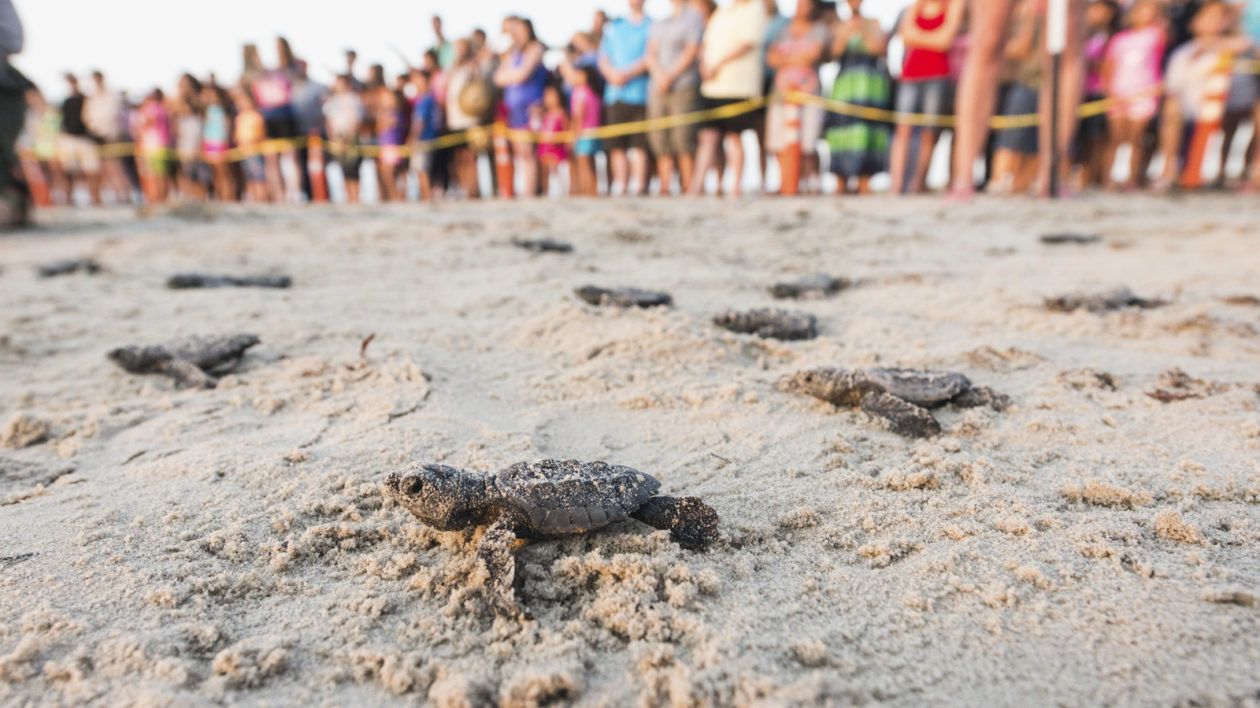




Terrific information and in an analogy that makes good sense.
I am half-way through Carl Safina’s book “Voyage of the Turtle: In Pursuit of Earth’s Last Dinosaur”, so your email is especially timely. The search was primarily focused on the Leatherback, but all endangered sea turtle species are mentioned. What magnificant animals! They so deserve better treatment than they have experienced at human hands. I would recommend this book to all who have an interest in preserving all of the earth’s species.
go vegan, stop all the killing